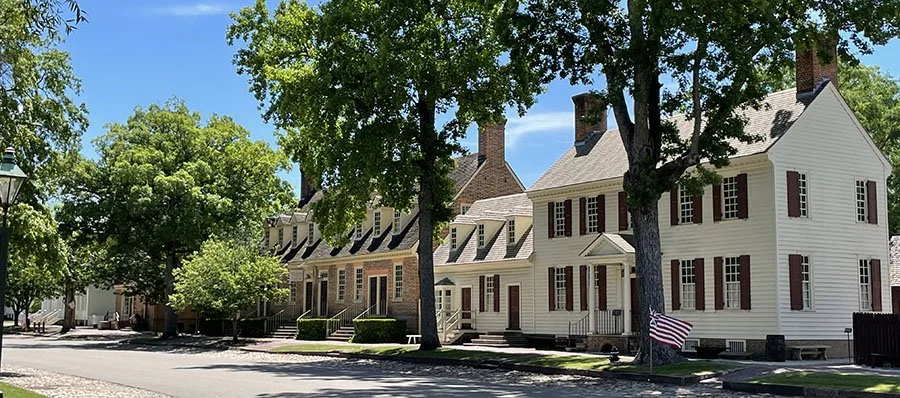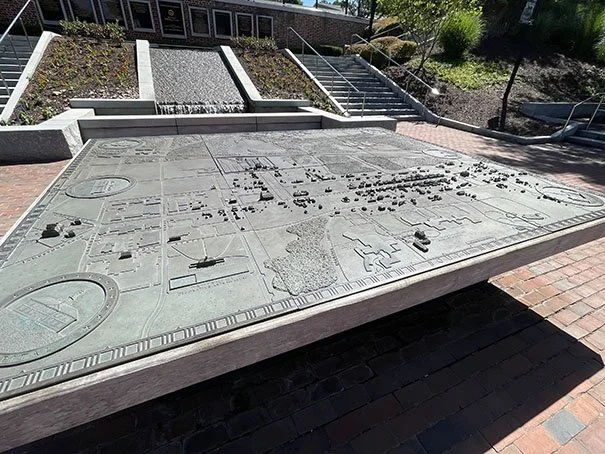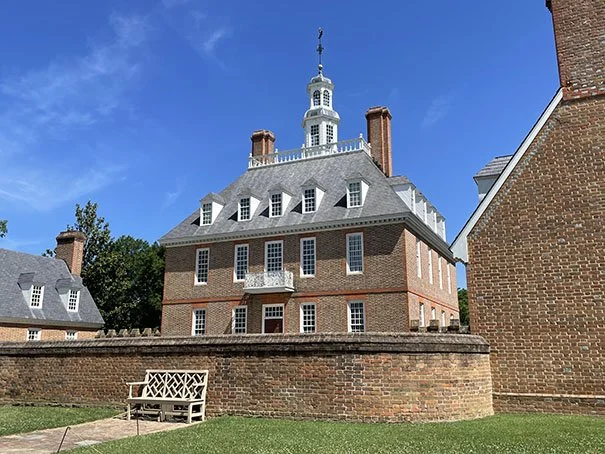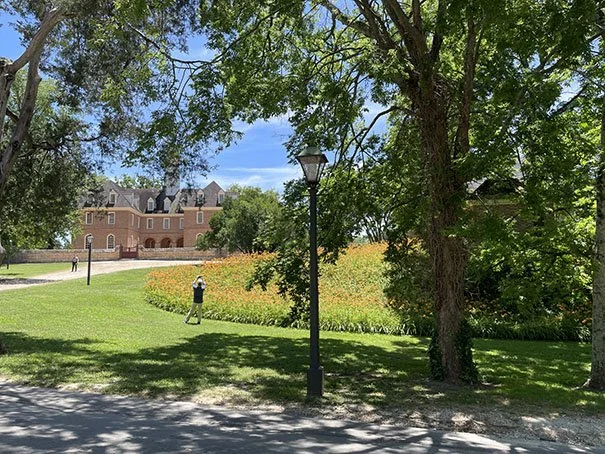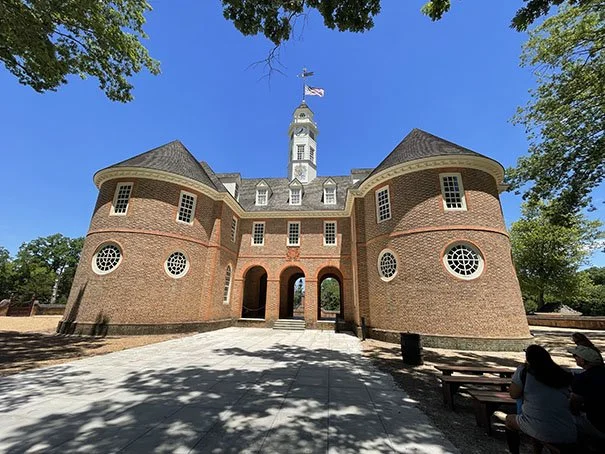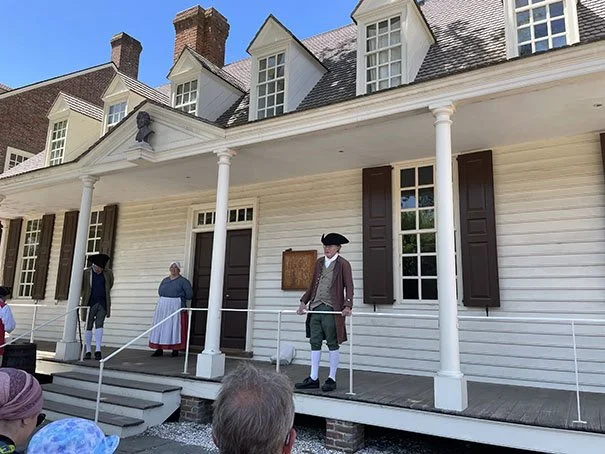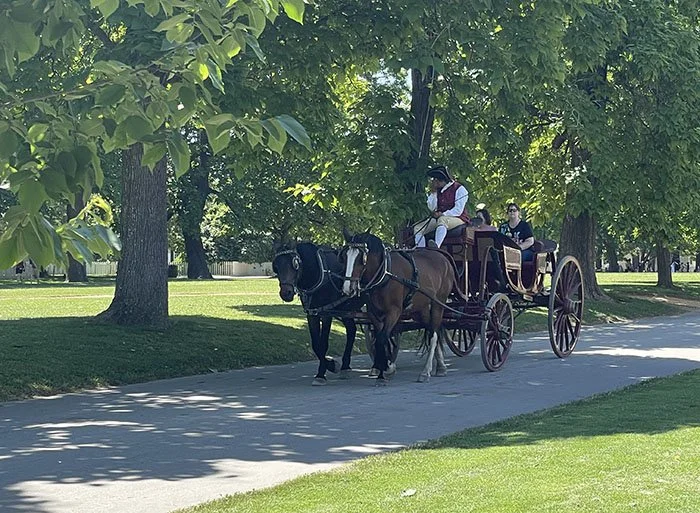Colonial Williamsburg
Homes on Duke of Gloucester Street in Colonial Williamsburg, VA
It’s Bigger Than You Think
Destinations | History and Monuments
During my scenic route tour of the Eastern United States at the end of my 2024 road trip, I met my cousins in Richmond, VA, who were on their way to their annual beach vacation in North Carolina. I had visited them just days before where they live at the Ohio-Pennsylvania border, and we decided to meet up in Richmond for dinner.
Since I was already there, I decided to spend the next day in Colonial Williamsburg, a living history museum about 1.5 hours east of Richmond on I-64. I love well-preserved historical buildings and towns, and I had long wanted to see Williamsburg.
Williamsburg was the colonial capitol of the Colony of Virginia before the American Revolution. It was the capitol for 81 years until it moved to Richmond, where it remains today.
I thought by spending a day in Colonial Williamsburg I would get the full experience. I was very wrong. You need a couple of days, if not more, to really experience Colonial Williamsburg. It has 301 acres with hundreds of buildings, 88 of which are original.
When I began walking down Duke of Gloucester Street, the “great street” through the town, it became clear I would not get to see everything. Other than the Governor’s Palace, I remained on Duke of Gloucester Street east of the Palace Green my entire visit.
Since I was limited to one day at Williamsburg, I chose to stick to the recommended highlights:
Governor’s Palace: Closest to the Visitors Center, the Governor’s Palace was the official residence of the royal governors of the Colony of Virginia plus the post-colonial home of Patrick Henry and Thomas Jefferson. The original was destroyed in a 1781 fire and reconstructed using Jefferson’s plans and architectural remnants from the fire. It is surrounded by elaborate gardens.
The Capitol: The center of colonial government, today’s building is a reconstruction of the first capitol, which burned in 1747. The building that replaced it was used from 1753-1779, when the capital moved to Richmond.
Governor’s Council: Modeled after the House of Lords, this was the upper house with 12 members appointed for life by the British monarch. After independence, the Council was appointed by the General Assembly. They also served as judges for the General Court, which heard felony cases.
House of Burgesses: The colonial predecessor of today’s House of Delegates, the House of Burgesses made laws for the colony of Virginia until independence. George Washington, Patrick Henry, Thomas Jefferson served as elected members.
Courthouse: This 1770s building was where county and city cases were heard. It was also where the Declaration of Independence was read aloud after arriving from Philadelphia.
Raleigh Tavern: This tavern was an important part of Williamsburg social life, providing guests with lodging, food, entertainment, and a horse stable.
Public Gaol: Using the old spelling of “jail,” the Public Gaol held prisoners who were waiting for trial or hanging. The unpleasantness of the Public Gaol was evident during the self-guided tour.
I did get to spend some time listening to Col. George Washington and the Marquis de Lafayette speak about current events in Colonial Williamsburg, which was informative and entertaining.
There is a good selection of restaurants in Colonial Williamsburg. For lunch, I enjoyed a meal at the King’s Arms Tavern. The service was friendly and very prompt; I was surprised at how fast my Stewed Beef came to my table (although I was there right as they opened).
Their menu is inspired by colonial recipes but modified for modern tastes; it was fun to read the menu in the language of the time. I had the Stewed Beef, which, per the menu, was:
“Stewed over a gentle fire up to four hours; then take out your beef, strain the gravy adding field mushrooms thickened and poured over your beef. Garnish with horseradish.” The London Art of Cookery – John Farley, 1787
When I return, I plan on staying at one of the nearby hotels so I can take my time to enjoy the Merchants Square, family homes, shops, restaurants, and historic tradesmen.

